What possessed the dignified monsieur Petitjean, who had launched the Parfums Lancôme in the previous year, to christen his new leather scent
Révolte? Armand Petitjean was no firebrand: a former importer of French products to Latin America, he had been a diplomat, mandated to persuade South American countries to support the Entente Powers (France, Russia, the UK) against the Central Powers (Germany, the Austro-Hungarian and Ottoman Empires) in WWI. Returning to civilian life, he worked with the “Napoleon of perfume”, the great François Coty. But he hadn’t agreed with Coty’s mass-market policy, and left the company, taking with him the head of the Coty studio, Georges Delhomme, and a chemist, Pierre Velon, to found his own luxury brand.
Lancôme was launched with great fanfare at the 1935 Brussels Universal Fair, with five fragrances, each meant to please different types of women on different continents:
Tropiques, Tendres Nuits, Kypre, Bocages and
Conquête. The scents bottled in baroque flacons designed by Delhomme in reaction to the spare, Art Deco trend – and in tune with fashion’s move towards femininity and away from the flapper era - were not a commercial success, and Petitjean soon branched out into skincare and makeup.
The
next year saw the launch of Révolte. It might well have been a belated answer to Lanvin’s own leather scent, the provocatively named
Scandale, but the social and political context in France was far from peaceful. 1936 was a bristling year in French politics. The civil war raged just south of the border, in Spain. The left-wing coalition Front Populaire has just gained power, and dedicated itself to easing the working class’ burdens, instating the 40-hour week and the first paid holidays (an event celebrated by Patou with
Vacances), promoting the access of culture and sports for the masses. It was also the first government to give ministerial portfolios to women, who hadn’t yet been granted the right to vote.
The name
Révolte, so unsuited to Armand Petitjean’s vision of luxury, didn’t last long. In 1939, it was
changed to the less inflammatory Cuir, so as not to damage Lancôme’s trade with Latin American countries who were rather agitated at the time, but also, one would surmise, because France had just declared war on Germany and any reminder of further instability, even a fragrant one, was unwelcome. Also the connotations in the English language (“revolt” brought to mind “revolting”, not good marketing for a scent) might have influenced the decision…
Armand Petitjean was the “nose” of his house as well as its copywriter. He also taught the Lancôme recruits on the subject of perfumery. In the Editions Assouline’s book by Jacqueline Demornex, Lancôme, Petitjean’s classes are quoted thus on the subject of his teacher, François Coty:
“Coty was a builder. In front of his castle of Montbazon, he had built a terrace, which gave the same impression as his perfumes: clear, solid, magnificent. He didn’t conceive that a living room could be anything but round or elliptical. The galleries, he wanted wide. His perfumes were exactly conceived in this way.”
It is thus the great heritage of the father of modern perfumery that is carried on in the first Lancôme compositions
. Cuir is a new chapter in the series of reissues that saw the release of Magie, Climat, Sikkim, Sagamore, Mille et une roses and Tropiques. Calice Becker, who also re-engineered Balmain’s
Vent Vert, is responsible with Pauline Zanoni for adapting M. Petitjean’s formula for contemporary noses…
This re-issue is particularly welcome as there are very few leather scents on the non-niche market, despite a slight revival (Armani
Cuir Améthyste, Guerlain
Cuir Beluga, Hermès
Kelly Calèche (click for review). Of the classics, only Chanel
Cuir de Russie has survived, if one discounts the leather chypres, which really belong to another category – leather should be one in itself. The cult classic Lanvin
Scandale, composed by Arpège author André Fraysse and discontinued in 1971, would be the template, along with Chanel’s, by which any leather should be judged. The Lanvin, Chanel and Lancôme share many notes in common:
Lanvin
Scandale: neroli, bergamot, mandarin, sage, Russian leather, iris, rose, ylang-ylang, incense, civet, oakmoss ,vanilla, vetiver, benzoin.
Chanel
Cuir de Russie: aldehydes, orange blossom, bergamot, mandarin, clary sage; iris, jasmine, rose, ylang-ylang, cedarwood, vetiver; styrax, leather, amber, vanilla.
Lancôme
Cuir: bergamot, mandarin, saffron, Jasmine, ylang-ylang, hawthorn, patchouli, Iris, birch, styrax.
The beautiful surprise of the new Cuir is its vintage feel. It may have been domesticated and toned down from the original – a necessity, given the current inaccessibility of many of the original ingredients – but it is still true, buttery, mouth-wateringly rich leather in the style of the much-regretted Lanvin
Scandale.
Bergamot and mandarin give the top notes their typically Lancôme hesperidic feel, but within seconds a creamy surge of ylang-ylang lends a sweet butteriness to the blend, underscored by the slightly medicinal accents of saffron. Jasmine and hawthorn are also listed as notes, but they never stand out as soloists. The smoky birch and balsamic-tarry styrax quickly rise to the fore, underscored by a very discreet patchouli; iris cools off the base and lends its discreetly earthy tinge.
Despite sharing several notes with the Chanel, Lancôme
Cuir doesn’t display its predecessor’s crisp, structured composition, lifted by Ernest Beaux’s trademark aldehydes.
Cuir sinks almost immediately into a yielding, warm, almost edible caramel-tinged leather: it is like the liquid version of a time-smoothed lambskin glove, clutching a handful of exotic blossoms. A nod to contemporary tastes is given in an unlisted, caramelized note, which tends to place Lancôme
Cuir in the families of gourmand scents in the drydown. At this stage, it evokes the sinuous sheath of sun-kissed skin…
Comparisons to
Scandale(discontinued in 1971) are hard to draw because of the difference in concentration (eau de parfum vs. extrait) and conservation conditions, but
Cuir would seem to lean more to the side of the Lanvin in its richness and animalic elegance.
One can only hope that Lanvin will follow suit and re-launch a fairly faithful adaptation of
Scandale, though its recent
Rumeur(
click for review), lovely but much tamer than the original, doesn’t bode well…
But there can truly never be enough leather scents to this leather lover.
Special thanks to R., the generous member of the Perfume of Life forum who sent me a large sample of Cuir; as well as to Vidabo, who shared her precise and poetic analysis on the forum and helped me shape mine.by Denyse Beaulieu, a.k.a. carmencanada
Pic on top from educationfrance5.fr

.jpg)

.bmp)

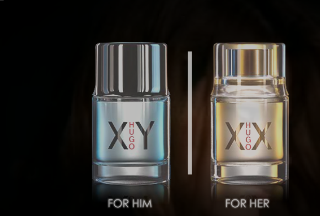 "What exactly is human nature"? A tall order to answer that, you'd say, as anthropologists, psychologists and philosophers have tried for centuries to no avail.
"What exactly is human nature"? A tall order to answer that, you'd say, as anthropologists, psychologists and philosophers have tried for centuries to no avail. 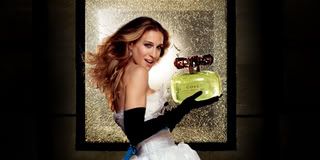 Sarah Jessica Parker impressed us with her Lovely musky foray into fragrance as we didn't really expect a celebrity perfume to be of any considerable substance. But this was a serious perfume lover we were talking about (
Sarah Jessica Parker impressed us with her Lovely musky foray into fragrance as we didn't really expect a celebrity perfume to be of any considerable substance. But this was a serious perfume lover we were talking about (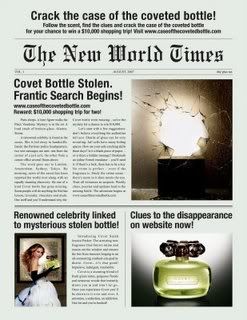
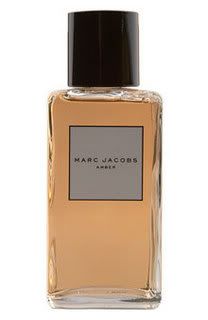

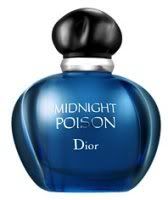


 A la Nuit, launched in 2000, seemed so definitive a rendition that it was described on the Makeup Alley forum by Tania Sanchez (co-author, with Luca Turin, of a perfume guide to be published in 2008), as “death by jasmine”? It would seem as though Lutens had an afterthought about the way in which this headiest of the heady white flower notes could be treated. And why not? If it weren’t for the simultaneous release of Louve in the export line, itself a tamer reworking of the non-export 1998 Rahät Loukhoum, the issue of Lutens’s inspiration, now that his partner-in-composition Christopher Sheldrake has gone on to assist Jacques Polge at Chanel, wouldn’t be so worrisome. But, though Sheldrake is said to be pursuing his work with Lutens, there seems to be something seriously amiss in this pioneering, uncompromising, profoundly idiosyncratic house.
A la Nuit, launched in 2000, seemed so definitive a rendition that it was described on the Makeup Alley forum by Tania Sanchez (co-author, with Luca Turin, of a perfume guide to be published in 2008), as “death by jasmine”? It would seem as though Lutens had an afterthought about the way in which this headiest of the heady white flower notes could be treated. And why not? If it weren’t for the simultaneous release of Louve in the export line, itself a tamer reworking of the non-export 1998 Rahät Loukhoum, the issue of Lutens’s inspiration, now that his partner-in-composition Christopher Sheldrake has gone on to assist Jacques Polge at Chanel, wouldn’t be so worrisome. But, though Sheldrake is said to be pursuing his work with Lutens, there seems to be something seriously amiss in this pioneering, uncompromising, profoundly idiosyncratic house.


.jpg)